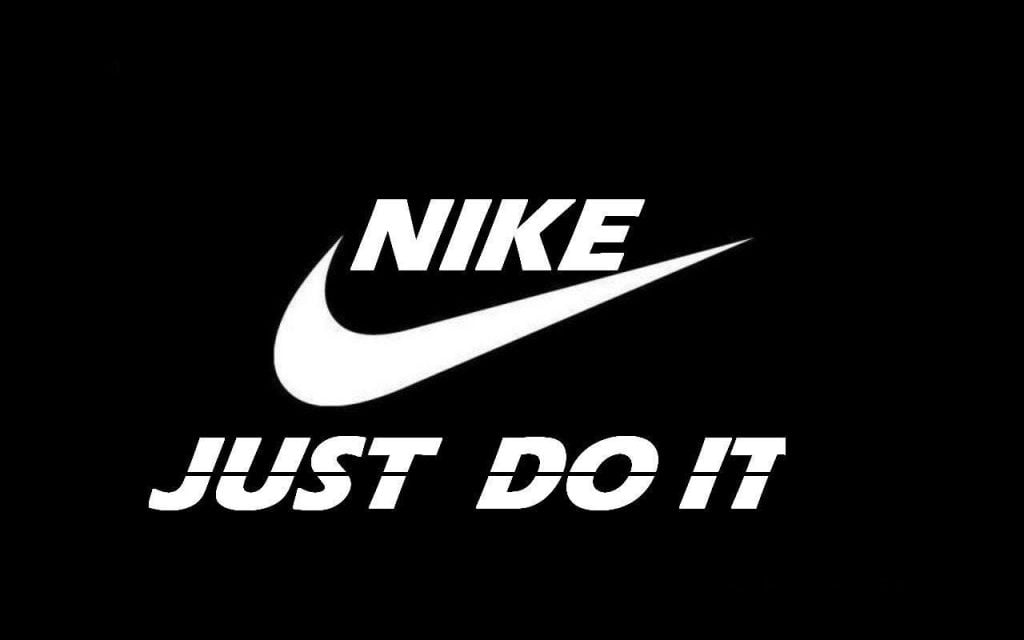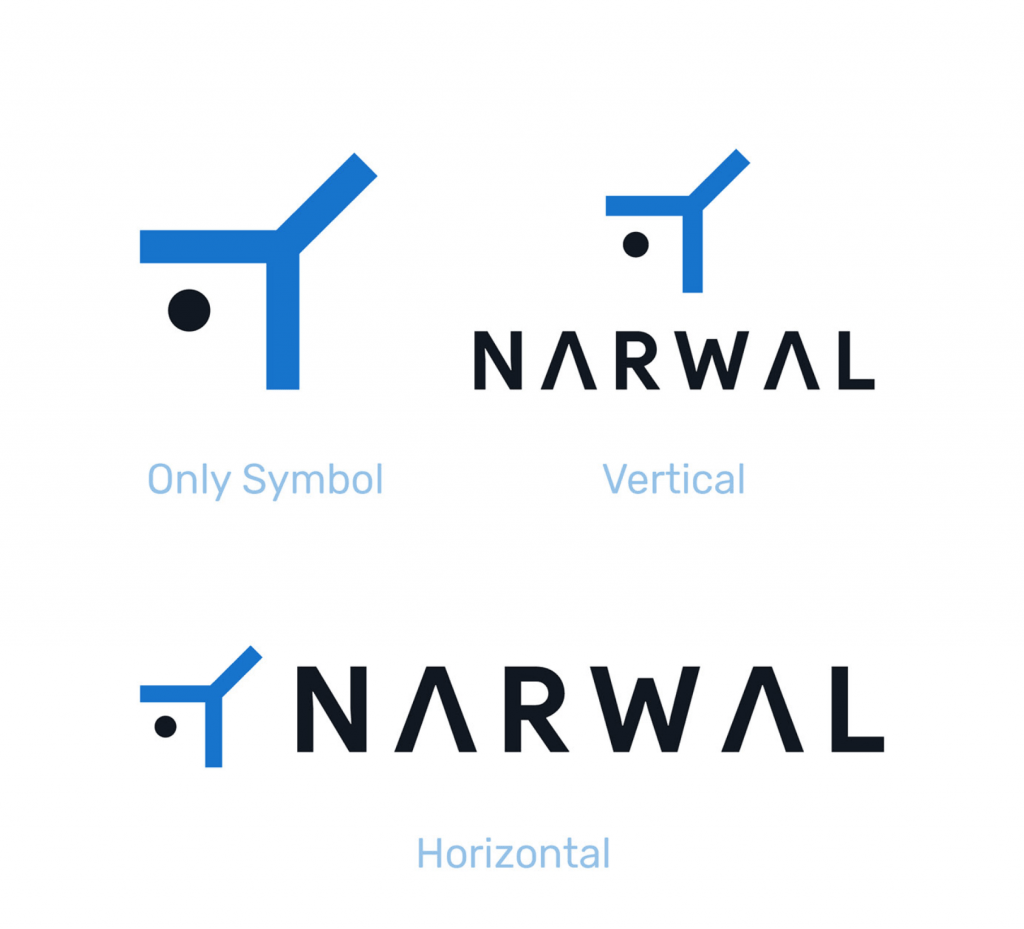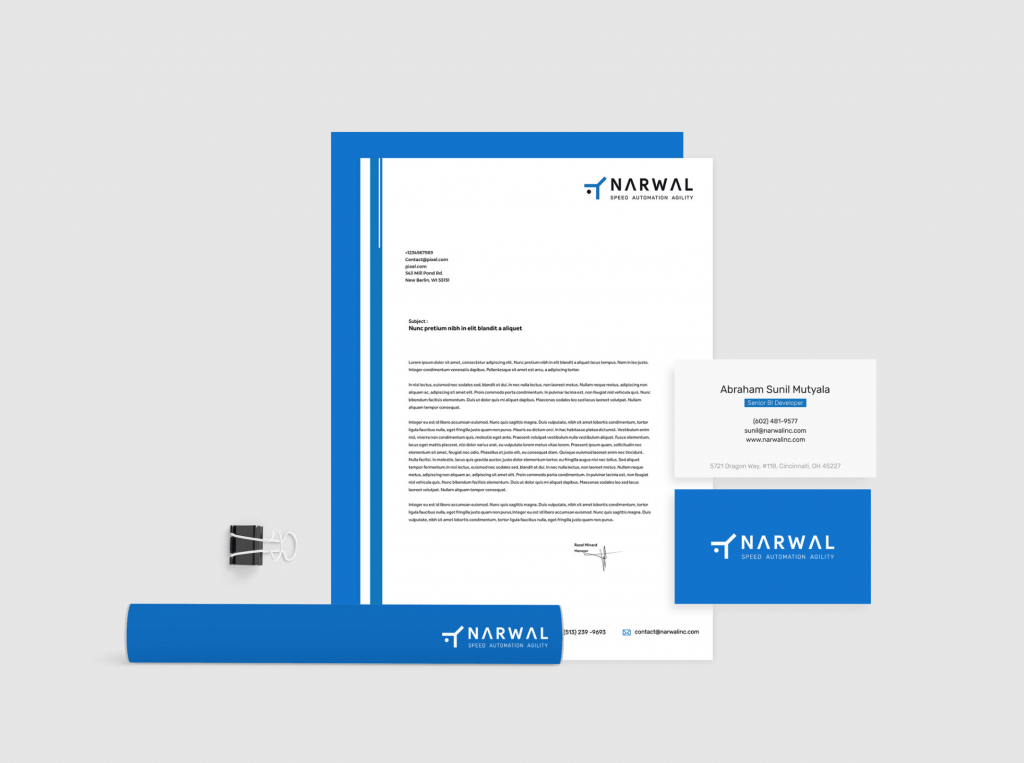Every brand has certain visual elements that, together, create a brand identity which sets it apart from other brands. This identity is crucial in enabling consumers to recognize the brand, identify it and distinguish it from other brands.
Though it is a major part of the brand identity, brand logo alone does not define the brand identity. It includes much more – it defines the intent that drives the branding and cultivates a distinct image in the mind of the consumer to enhance its emotional appeal as well as loyalty. It reflects the promise that the brand holds for its customers giving them the confidence of trusting the brand.

Brand image helps to alter the consumer behavior and a positive brand image is essential to any company’s sales and marketing efforts. It is a means to gain an advantage over other competitive brands selling similar products.
It is a known fact that people prefer buying new products from brands that they trust. 59% of people prefer to use new products of trusted brands and 81% of the consumers buy from brands they trust. Brand identity goes a long way into developing that bond of trust.

However, building a brand image is a tricky job. One has to understand the branding and the products to create a brand identity that complements the brand and its product while also resonating with the consumers in a way that it inspires confidence and builds trust.
This post is a comprehensive guide to building brand identity. Herein, we will discuss all that you need to know about brand identity and how to build a brand identity that will endear it to the consumers. This post will cover the following topics:
- What is brand identity
- Why is brand identity important for organisations
- Brand strategy and brand identity
- Factors to consider when building brand identity
- Elements of brand identity
- Creating brand identity: The process
We will begin with understanding the concept of brand identity and what it is. Without understanding the concept, it would be difficult to grasp the process and how it can impact your brands and organization.
Table of Content
- What is brand identity?
- Why is brand identity important for organisations?
- Brand strategy and brand identity
- Brand identity and brand image
- Essentials of building an effective brand identity
- Elements of a brand identity
- Creating a brand identity: The process
What Is Brand Identity?
Brand identity is everything that one associates with the brand, which includes sensory elements as well as emotional responses.
Thus, color, music, logo, tagline all go on to create the brand identity in conjunction with all that the organization does - its mission, values, promise, etc.
It encompasses all the qualities that a consumer may identify with and respond to. We can, thus, personify a brand and say that brand identity is the personality that a brand projects.
Brand identity is closely related to your organization, its products and services. It encompasses all that your organization or brand wants to communicate to its audience, the value it endorses, and the experience that you wish the consumers to have when using your products or services.
The values that a brand wishes to uphold or endorse are conveyed through its branding and marketing strategies.
These strategies are aimed at creating emotional as well a functional association with the brand. These associations are aimed not so much towards inducing the desire to buy, but rather, creating familiarity and distinguishing features that help to differentiate the brand from the others.
In brief: Brand identity is the image you wish to convey to your consumers and a promise to them for a certain kind of experience.
Now that we know what is brand identity, the next logical question is why is it important for any organization.
Why Is Brand Identity Important For Organisations?
It is a well-known fact that a strong and recognizable brand is an essential part of any successful business. Having a brand identity is a part of that exercise which helps the brand to create associations with its consumers.
It helps to convey the organization’s personality to its consumers. It assists in delivering a consistent message and also in differentiation of the brand from competitors. It builds awareness and promotes brand loyalty, which is the ultimate goal of any branding activity.
Let us take a comprehensive look at the benefits an organization can derive from its brand identity.
Showcases brand mission and brand value
Brand identity plays a major part in promoting brand mission and brand value. It is a visual statement of the message you wish to convey to your audience. It helps to create an image that the business is established and hence, it is reliable and trustworthy.
This perception may help to enhance the value of your brand so much so that your consumers are prepared to pay more for your product.
A good example of how brand identity alters perception and value is Apple. People wait for the release of the next iPhone or iPad and are willing to pay much more for its products than the competitors.
https://www.youtube.com/watch?v=2EmFATpRfnI
The strong brand identity creates this anticipation and perceived value over and above the intrinsic value of the actual product.
Positions the brand and its products uniquely amongst competitors
One of the most important reasons to invest in brand identity is to create a differentiation between your products and those of your competitors. A strong brand identity assists in making your products stand out from the rest of the competition.
It creates a perceived value of the products associated with the brand and encourages the consumers to purchase or associate with it.
Brand identity augments the value proposition of the product
Brand identity is a representation of the brand value and trust consumers have in the brand. It conveys your organization’s goals and values thus showing them a humane side of the business. This often helps to create a long-term relationship with people who share the same values and aims.
Creating a unique brand identity shows that you mean business and are proud of what you do. This will generate confidence in the consumers to take a chance on you as they believe that you will deliver on your promise.
Creates a unique identity for the brand, making the brand more recognisable and memorable
Having a strong brand identity conveys a sense of uniformity, cohesiveness and consistency. It reiterates the brand’s visual cues by constantly presenting the consumers with a uniform visual experience.
When they see the same visual cues over and over again, the consumers start to recognize it and remember it. The more they remember the brand the more the audience will engage with it and form an opinion of it.
This, in turn, helps with the overall branding, marketing and sales efforts. Having similar visual, audio, and branding cues across the channels provides the foundation for a harmonious and distinct brand experience that cannot be replicated by anyone else.
Builds brand equity
Creating a memorable, easily identifiable product that promises reliability and is better than the rest is what brand equity is all about. Having a strong brand identity enhances the brand equity of a product making it more desirable than the other similar products.
Taking our example from before, Apple is a perfect example of what brand identity and equity can do to a product.
We can, thus, conclude that creating a brand identity adds an intrinsic value and a unique proposition to a product. This helps to not only make the product more desirable but also to enhance its value.
Now that we are clear about its importance, let us see how brand identity is essential for creating a brand strategy.
Brand Strategy and Brand Identity
How people perceive your brand and what they associate with it is a complex process. It requires a comprehensive policy and careful planning to cultivate and cannot be left to chance. It requires a dedicated strategy and the brand identity plays a major part in shaping that strategy. It is brand identity which defines the goals that the brand strategy needs to achieve.
Brand strategy is the plan that is set down and describes the ways in which the company’s brands will be built, shaped and presented to the consumers. If there is no strategy, then the branding activities and brand identity is left to factors of uncertainty which do not always bode well for a brand.
A brand strategy helps to direct all branding activity towards the values and culture that the company wishes to identify with. It is a concentrated effort by an organization to openly promote their values, culture, vision and goals to the public. It is done in a manner that the consumers know and assimilate this information and associate it with the brand.
The brand identity disseminates this information pertaining to the business strategy, culture, vision and values of the business, in such a manner that it influences the public perception of the brand which, eventually, assists in the sales and marketing efforts. It was discovered that 87% of people will purchase a product from a brand only because they identified with the values it represented.
Tesla is a great example of successful brand strategy. The luxury car manufacturer has concentrated its branding strategy on its strength of - eco-friendly, electric, long range, luxury cars. It has driven its branding strategy around these distinctions from its competitors - which are mostly petrol/diesel driven or hybrid luxury cars.
Brand strategy cannot ignore any of the stakeholders – be it the consumers, the associates, employees, vendors, buyers, media, etc.. It needs to resonate with all to be effective. Each one of the stakeholders should be able to connect emotionally with your brands. Only when people are passionate about a thing or feel an emotional connection to something will they be willing to make an effort to not just support it but also to advocate it. Inability to recognize the contribution of all the stakeholders can often have disastrous consequences.
Having a brand identity that showcases and resonates the brand’s ideals and portrays them effectively will be successful in creating a better brand image in the minds of the consumers. It fosters brand trust and enhances the brand equity. The best way to achieve it is by aligning the customer experience to maximize customer satisfaction and ensuring effective brand identity distribution across all touchpoints.
While to many, it may seem that Brand Image and Brand identity are the same, they are different concepts and each of them has an important part to play in the success of a brand. Let us understand the fundamental difference between the two concepts and what is their contribution to the branding exercise, before we proceed.
Brand Identity and Brand Image
The two concepts are interrelated yet fundamentally different. While Brand identity relates to all the visual elements that are created to make the brand stand out, Brand image is the emotional connect that the consumers have with the brand.
Brand identity consists of the colors, shapes, logo, typography, images, styles, symbols, slogans, etc. that is bunched together to create a unique identity for your brand making it stand apart from the competitors.
Brand identity reflects the message that you wish to convey to your audience through visual communication. It demands consistency across all media as it is the first impression that the consumers get of the brand and its products. The brand identity should be aligned towards a strong impression for instant recall and concrete brand positioning.
Brand image pertains to the way your audience perceive the brand and how they feel about it. It is an emotional response to the brand identity and the messages it conveys. The brand image is always aligned to the brand identity which assists in creating the right perspective for the brand. It takes time to build the brand image.
It requires interaction between the consumer and the brand and the kind of experiences that a consumer takes home from those interactions. Creating a positive, optimistic and powerful brand image is essential for consumer confidence and enhances sales. It also encourages brand loyalty and brand advocacy.
Brand identity influences the brand image. The values, culture, and messages that are conveyed through the brand identity help to forge the brand’s image. Often rebranding and changing the brand identity can change the brand image. Creating a new identity helps to create new associations and new in time a new image of the brand which may be more favourable than the previous one.
A great example of changing brand identity to change the brand image would be that of Dunkin Donuts. The company dropped the word Donuts from its name and logo to retain just Dunkin. This was to refresh the brand image from focusing on just donuts to other products that are now a part of the company’s offering to the consumers. Dropping the Donuts was also an aim to connect with a younger generation of consumers.

As mentioned before, building a brand identity is a complex task. There are several factors that have to be taken into consideration when building brand identity. In the following sections we will reflect on these factors and to understand them.
Essentials of Building an Effective Brand Identity
Irrespective of the products that a brand may represent there are certain elements that have to be considered when creating a brand identity. Paying attention to these factors can make the difference between becoming a standout brand and one that gets lost in the noise.
The crux lies in understanding the essentials of creating an identity which goes beyond mere aesthetics.
What is required is to create a bold, identifiable, relevant and memorable brand that is recognizable, consistent and clearly communicates the company’s message and ethos. It should have continuing value, can be used across media and works well in both monochrome and multicolor formats.
The factors that can assist in creating an identity that conforms to the above mentioned functions include:
Vision
The best brands are inspired by a vision. This represents an innovation and imagination that goes beyond the ordinary. It is the spirit of enterprise, discovering and delivering that which was not thought before, or was believed to be impossible.

It represents futuristic thinking which inspires the products, brand and the company. It takes the vision of just one strategic thinker to create a legend. They assimilate business critical information and anticipate future demands and needs to create a brand that resonates with the audience.
Meaning
The most successful brands represent something – an idea, an ideal, certain value or values, or a message that helps to distinguish them. By symbolizing a brand we ascribe meaning to them.

When people begin to understand these meanings, they create an emotional bond which is memorable and recognizable. Meaning of a brand cannot always be understood immediately, it takes time to develop.
Authenticity and Coherence
Authenticity is knowing who you are and what you can do and adhering to it. Companies that make promises which they can deliver are perceived as authentic. So, a brand that lives up to its promise of mission, values, culture and can be perceived as authentic.

When a customer has a seamless experience with a brand across the products and services it offers, it means that all the parts of the organization work well.
Coherence is what makes all the different sections of any organization work together smoothly. When a customer has a smooth and pleasant experience across all touchpoints, it builds confidence, trust and loyalty.
Differentiation
In a marketplace that is filled to the brim with competing products, standing out pays rich dividends. When creating a brand identity, one must emphasize the differences and what makes them better than the rest.
Brands should make it easy for the public to understand the differences so they can make informed choices while picking one brand over the other.
Value
The ultimate goal of any organization is creating value for its products and its brands. Now value doesn’t only mean in the monetary sense. It also includes the goodwill that a company earns through its actions, values, and ethos.
When a brand is associated with socially responsible actions, it enhances the value of the company and affects all that it represents including its brand. The brand identity, thus upholds those values of the organization tangibly as well as intangibly.
Paying attention to the above-mentioned factors, we can create a brand identity that is enduring and strong. Brand identity is created by combining many different visual elements together. In our next section we will look at these elements and how they translate into one comprehensive brand identity.
Elements Of A Brand Identity
Brand identity is not confined just to the logo but a whole lot more. There are a multiple of elements that work together to create the brand identity.
These elements include:
Logo
It is, undoubtedly, one of the most important elements of brand identity. It is also known as brandmark, wordmark, signature, or pictorial mark. It is a pictorial representation or a graphical symbol of a brand. It may contain the name of the company or brand or can just be a symbol or an image that represents the company.
The symbol of Apple is perhaps the most recognized and whether the name is there or not just the symbol of the Apple with a bite on the side is enough to tell the viewer that is it looking at an Apple product.
Similarly, some brands use a specific typography to create a text symbol that becomes representative of the brand. A familiar wordmark or brand mark would be Coca-Cola. A specific font in a specific colour represents the company and is instantly identifiable.
Whether one uses a wordmark, symbol or an image, it needs to be professionally designed and represents the values of the brand and the company.
Typography
Also known as the Corporate Font, letterform marks, this is the font and text style that is used for all the corporate activities including the website. Often the corporate font is taken from the logo itself.
However, some fonts may not render well for large blocks of text such as the website content or blogs. In such cases, a compatible font is picked that is used to create the brand identity. This font then represents the brand and becomes a part of the entire brand identity exercise.

Color Palette
Colors are an important element of brand identity as they have psychological inferences. Picking the right color for the brand is one of the most important parts of the brand identity. Knowing about the psychology of colors can reap rich rewards as it can help to pick the right color for the brand and what it represents.
Color palette represents the colors that are associated with the brand. Most commonly, the colors are picked from the logo and may consist of 1 or more colors.

Typically, no more than 3 primary colors are associated with any brand. However, this should not restrict the color palette as different tints or shades of the same colors can be used to create a larger palette. This also helps in controlling the emotions conveyed by the brand color scheme.
Tagline
Tag lines are also called theme lines. These are short texts typically consisting of one or two phrases, such as catch phrases or slogans that represent the philosophy of the brand. They are designed for dramatic effect and memorability.
They are used in marketing material and if they catch on can be very valuable for the brand. Nike's tagline "Just Do It: is perhaps the most famous tagline of all time.

Audio Signatures
These are unique sounds that are associated with a particular brand. Audio Signatures or Sonic signatures help the brand to stand out from the competitor, engage the listener and enhance brand recognition.
Many times we hear a scrap of music floating down and instantly recognize it as that of a particular brand. That is the power of audio signature.
These can be used across all audio-visual media, vlogs, podcasts, advertisements, radio, etc. to emphasize and enhance brand identity and recognition.
Logo Animation
We have already determined the importance of logos for brand identity. Now when you add animation to the logo or the brandmark, its impact becomes much more powerful. Think about it, most companies use logos that are static – so each one is at the same place with an equal opportunity to be noticed or ignored.
However, when you add animation to the logo, the dynamics change. Audiences are more likely to notice an animated symbol or figure over a static one. Animated logos stand out and denote innovation. They are fun and engaging and can be effectively used in all audio-visual and digital channels.
Corporate brand stationery
All the official stationary and correspondence of an organization should reflect its branding. The color palette, typography and logo should be displayed to enhance the brand identity. This should be used on letterheads, business cards, envelopes, Brochures, and other stationary used for official work, etc.
Email signatures, social media brand design
Digital media plays an important role these days in creating and enhancing the brand identity. Social media especially has a major part to play in the entire branding exercise. The social media brand design should reflect and be in sync with the overall branding. The colors, fonts, typography, images should all correspond to the overall brand identity.
Digital outreach also includes emails that are sent on behalf of the organization, whether they are as part of the marketing and sales exercise or for other administrative purposes. The email signatures should also conform to the overall brand look and feel. The use of Brand logo, typeface, colors and imagery is essential for brand identity.
View this post on Instagram
SEMRush showcases its brand identity in all of its social media posts
Tip: Trademarks are also an integral part of the branding process. Registering the trademarks of your brand is essential so no one else can use those elements and your intangible asset and the brand is legally protected.
As illustrated above, each element works with the others to create the overall brand identity and strengthen it. Each exposure creates an association that, over time, becomes an integral part of the brand and goes on to create its identity.
Creating the brand identity is a complex process. There are several things that need to be accomplished to create the brand identity. These go beyond just creating the elements and using them. The process requires careful planning, research and execution to create a strong brand identity.
In this next part we will discuss the entire process that goes into creating a successful brand identity.
Creating A Brand Identity: The Process
The best way to start with any project is to break down the entire process from start to finish into smaller stages or steps. It facilitates streamlining the entire exercise and ensuring the final outcome is as was expected.
The process of creating a brand identity can also be broken down into four distinct steps. Each step needs to be completed before we can move on to the next to ensure that the brand identity that we create is effective.
Let us look at how we create a brand identity design:
Step 1:Research
No process can be started without initial research and the same is true for the process of creating a brand identity. In this first stage we need to know as much as we possibly can about the company, organization, products, market and the competition. This gives us an idea of what is required from the brand identity, what needs to be done to create an effective brand identity.
To find out all that is needed many tools can be used. These include:
Market Research
This needs to be both Qualitative and Quantitative research to get a clear idea of the market and its potential. Data can be collected through surveys, questionnaires and polls and also through observation of consumer behavior and motivation to determine what needs to be done to create a brand identity that resonates with the target audience.
Product Usability Testing
As the name suggests, here the product is evaluated based on consumer usage and feedback. This can be used to both improve the product as well as create a more effective brand identity.
Marketing Audit
This is an analysis of the marketing environment and understanding the requirements of the market before embarking on the journey of creating a brand identity. The feedback can be used to tweak the branding exercise.
Competitive audit
It is essential to know the competition and understand its products and marketing tactics. This helps to give a more comprehensive picture of what you're dealing with and what are the areas to focus on to stand apart and above the competition.
Creating Buyer Personas
Knowing the segment of the consumer who is most likely to buy and be interested in your products assists with your branding activity. Creating a buyer persona can enhance your understanding of the target buyer and their typical behaviour and responses.
Step 2: Strategy
Once the initial research is done, the data and feedback can be used to create a clear cut branding strategy that would include the creation of the brand identity.
The strategy would define what to focus on and which segment to target with your brand identity. The initial research will give you all the information needed to create a comprehensive strategy for the brand identity.
Step 3: Design
This is the third stage where the actual designing of the brand takes place.
It is at this stage that the client and designers sit down and discuss the details of the design elements, logo, symbols, color palette, typography, tag line, music, audio files, etc.
Several mood boards and mockups may be created and presented to the client for feedback, changes and approval. Once the designing process is complete, we move on to the final stage of creating the brand identity.
Here is an example of What A Story Brand Design and Identity project. These designs were created for an Information Technology Firm which is a leader in Data Analytics and Automation.
The design brief was to create a simple yet memorable logo with clean lines and bold fonts. Here is what we did:



Step 4: Creating touch points
This is the stage where the approved designs are implemented into creating touchpoints where the brand will interact with the audience and the process of creating the brand identity will begin. This stage includes many different tasks that need to be completed.
These include:
Letterhead
Creating the official stationery that would be used for all communications is another part of this process. The letterhead is the first of these and should have the look and feel of the branding. It should contain the logo of the brand, the typography and colors should be similar to the branding.

Business Card
Next is creating the business card. This too should have the logo, typography and colour palette that represents the brand.
Marketing Collaterals
Creating marketing collaterals with the branding. These would include, brochures, pamphlets, packaging, etc.
Website and Owned Media
Designing the website and other owned media to correspond with the brand is another part of this entire process.

Advertising and Media
Creating social media pages and posts with the brand elements prominently featured and conforming to the aspired brand identity is also included in this process.
Experiences
Creating experiences that are in sync with the brand and the image that needs to be projected is the final part of creating a comprehensive brand identity. The brand identity must also reflect in elements like product packaging to give customers an omnichannel brand experience
And that's a wrap
What a Story is well versed with the process as well as the requirements of creating an effective brand identity. Their experience in designing and branding gives them an edge over the competitors when it comes to creating a positive and relevant brand identity which resonates with the public.
Contact us to know what we can do for your organization and brands.







![The Best 10 Explainer Video Companies In India [2024]](https://whatastory.agency/wp-content/uploads/2020/04/best_explainer_video_companies_india_whatastory-1.jpg)





